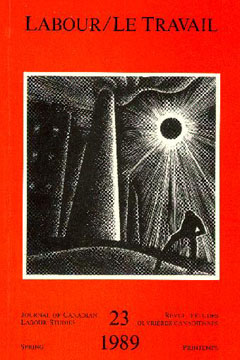Abstract
The case for systematic attention by labour historians to the crew list collection held in the Maritime History Archive of the Memorial University of Newfoundland is argued in terms of the historical interest of British maritime labour in the 19th and 20th centuries, and of the richness of the material itself. Maritime labour was characterised by a series of hiring practices and business dynamics which make it particularly worthy of attention. The impact of steam and steel technology, increased capitalization and government attention, and the emergence of a collective identity within the workforce, combine to produce a unique but important labour phenomenon which the existence of almost complete demographic and employment data bring well within the grasp of the historian. Various methodologies for studying the material are discussed, and the preferred method of studying the workforce of one large firm over a short period of time is illustrated with a brief case study.
Resume
L'intérêt historique que présente l'histoire maritime britannique aux 19e et 20e siècles justifie amplement l'attention systématique portée par les historiens à la collection de listes d'équipage des Archives historiques maritimes de l'université Memorial de Terre-Neuve. Le travail maritime était caractérisé par une série de pratiques d'embauché et par une dynamique interne qui mettent particulièrement notre attention. Les effets de la technologie basée sur la vapeur et l'acier, la capitalization accrue et les considérations gouvernementales, ainsi que l'émergence d'une identité collective des travailleurs s'unissent pour produire un phénomène ouvrier unique et important mis à la portée des historiens/nes par l'existence de cette série presque complète de statistiques démographiques et ouvrières. L'article discute plusieurs méthodologies pour étudier ce corpus. Une étude de cas montre la pertinence d'une méthode pour aborder la force de travail d'une grande entreprise pendant une courte période de temps.
